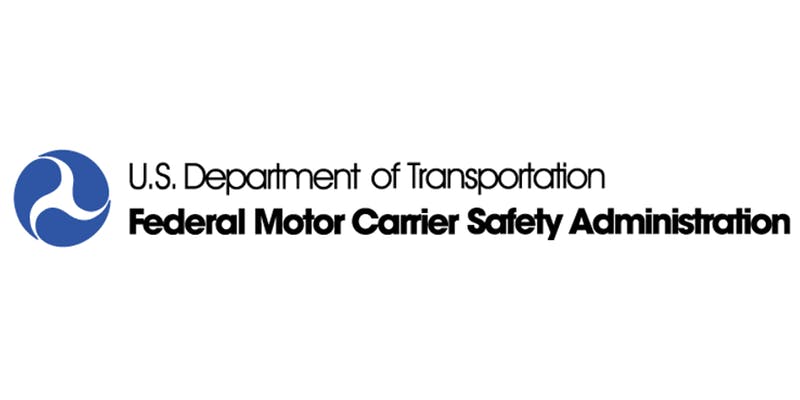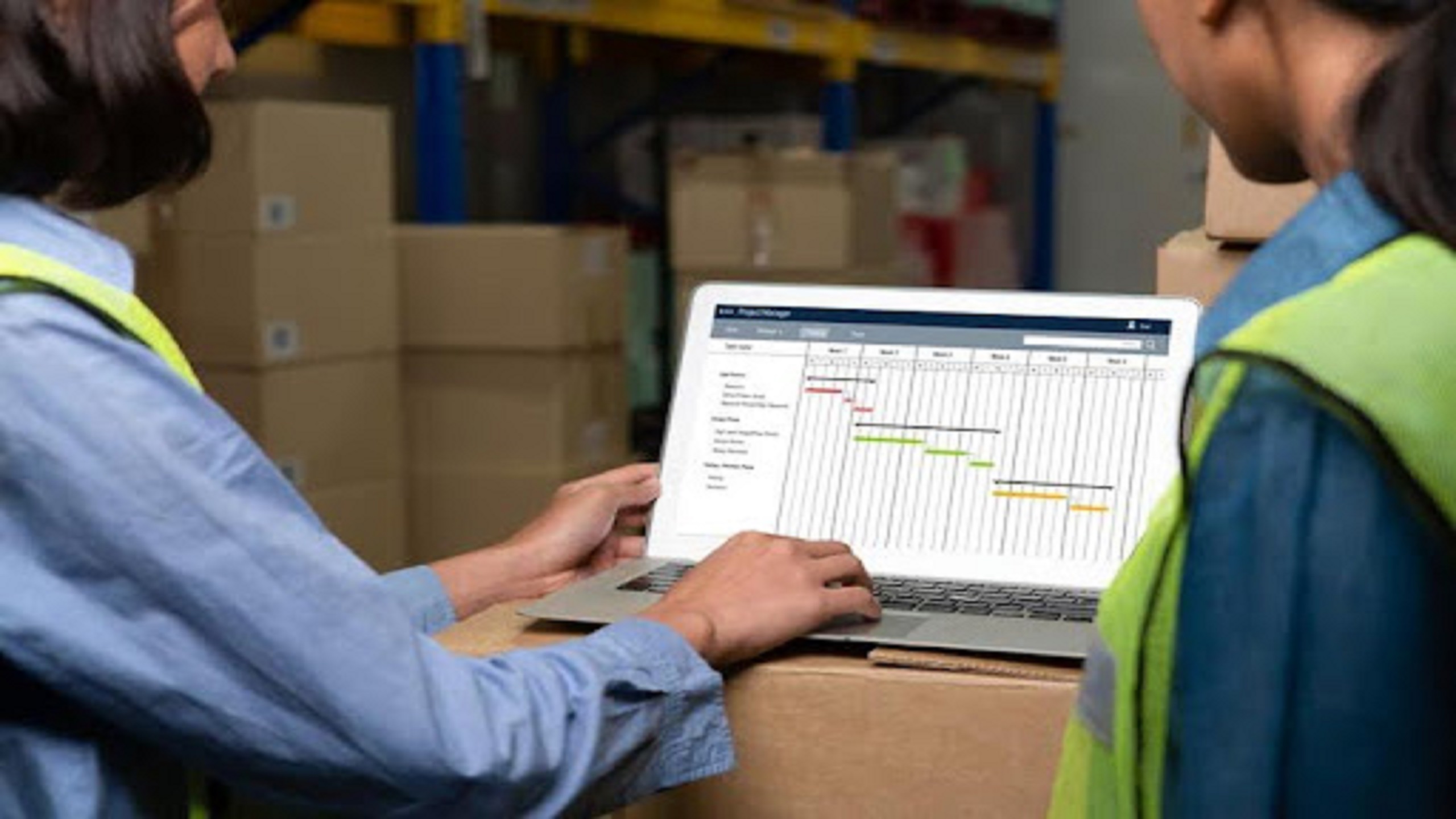What Is an FMCSA Clearinghouse Violation?
A Clearinghouse violation is triggered when a driver:
- Tests positive for drugs or alcohol
- Refuses a test
- Tampers with a sample
These violations are recorded in the FMCSA Clearinghouse—a federal database employers must check before hiring CDL drivers. Until you complete the return-to-duty process, you’ll be listed as “prohibited” and unable to perform safety-sensitive functions like driving a commercial vehicle.
Your 5-Step Guide to Resolving a Violation
1. Designate a Qualified SAP
Your first step is to log into the FMCSA Clearinghouse and choose a certified SAP.
How to do it:
- Log in and locate your violation.
- Scroll down until you see a red button labeled “Select SAP.”
- Enter the name Roderick Fields and company name SAP Solutions.
Pro Tip: Call us at (916) 256-8714 to confirm availability and ask any questions before you submit your designation. Building that early connection makes the process smoother.

2. Complete Your SAP Evaluation
After designation, you’ll be scheduled for an initial evaluation—usually via secure video call. During this session, the SAP reviews:
- Your violation details
- Substance use history
- Personal and professional background
Following the assessment, the SAP creates a customized education or treatment plan. Note: You are required to complete this plan with a third-party provider; SAPs cannot offer the treatment themselves.
3. Follow the SAP’s Recommendations
Your next responsibility is to complete the program assigned to you. This may include:
- Drug and alcohol counseling
- Educational classes
- Outpatient treatment
The duration varies based on individual needs—some drivers finish in a few weeks, others may take longer. Save all documentation. Once completed, your SAP will verify your compliance.
4. Take and Pass the Return-to-Duty (RTD) Test
When your SAP gives the green light, you must take a federally observed RTD drug test. If you’re unemployed, you’ll need a sponsor—such as a potential employer or a third-party administrator (C/TPA)—to facilitate testing.
A negative result will be uploaded to the Clearinghouse, clearing one of the last hurdles to reinstatement.
5. Complete Follow-Up Testing
Even after returning to work, your journey isn’t over. Your SAP will require a minimum of 6 unannounced, observed tests within 12 months.
These are in addition to any regular DOT random testing, and your employer is required to report the results back to the Clearinghouse.
What’s at Stake: Key Deadlines and Consequences
- CDL Risk: If you’re marked as “prohibited,” you could lose your CDL entirely—especially in states enforcing early disqualification policies.
- Long-Term Impact: Violations remain in the Clearinghouse for 5 years or until you complete the SAP process—whichever is longer.
Don’t delay. Every day you wait increases the time your record stays flagged.
Why Choose SAP Solutions?
- Virtual Appointments: Complete evaluations from the comfort of home.
- Certified Experts: All our professionals are DOT-qualified and compliance-focused.
- Personal Support: From designation to follow-ups, we help you handle every step of the process with clarity and confidence.

Tips for a Successful Return
- Be Proactive: Start the process immediately after your violation to avoid CDL suspension or job loss.
- Plan for Costs: Most SAP services are not covered by insurance. We offer flexible payment plans to help you stay on track.
- Know the Rules: Learn DOT policies to prevent future violations. Don’t hesitate to ask for support.
Let SAP Solutions Help You Reclaim Your Career
A Clearinghouse violation isn’t the end—it’s a chance to reset and move forward. SAP Solutions is here to help you comply, recover, and return to work with confidence.
👉 Ready to get started? Visit www.dotsap.center to schedule your evaluation.
Questions? Call us at (916) 256-8714 or email support@dotsap.center
Learn MoreUnderstanding the Difference Between Non-DOT and DOT Drug Testing: A Guide for Employers
At SAP Solutions, we specialize in helping businesses implement compliant and effective workplace drug testing programs. One of the most common questions we receive is: What’s the difference between non-DOT and DOT drug testing? While both serve the purpose of maintaining safe workplaces, they are governed by distinct regulations, procedures, and requirements. Let’s break down the key differences to help you determine which program aligns with your organization’s needs.
What is DOT Drug Testing?
The Department of Transportation (DOT) mandates drug and alcohol testing for employees in safety-sensitive roles within regulated industries, such as:
– Commercial trucking (FMCSA)
– Aviation (FAA)
– Railroads (FRA)
– Public transit (FTA)
– Pipeline operations (PHMSA)
– Maritime (USCG)
Key Features of DOT Drug Testing:
1. Federal Regulations: Governed by 49 CFR Part 40, DOT testing follows strict federal guidelines. Employers must adhere to standardized procedures for testing, reporting, and recordkeeping.
2. Testing Panel: DOT tests for 5 specific substances: Marijuana (THC), Cocaine, Amphetamines, Opioids (Codeine, Morphine, Heroin, etc.), and Phencyclidine (PCP).
3. Mandatory Scenarios: Testing is required pre-employment, randomly, post-accident, upon reasonable suspicion, return-to-duty, and follow-up.
4. Medical Review Officer (MRO): All positive results are verified by an MRO to rule out medical explanations.
5. Consequences for Violations: Employees who test positive are immediately removed from safety-sensitive duties and must complete a Return-to-Duty process with a Substance Abuse Professional (SAP).
—
What is Non-DOT Drug Testing?
Non-DOT drug testing applies to employers and industries not regulated by federal transportation laws. These programs are typically designed by employers or states to meet company-specific safety goals, state laws, or industry standards.
Key Features of Non-DOT Drug Testing:
1. Flexible Regulations: Non-DOT testing is governed by state laws and company policies, allowing employers to customize their programs.
2. Expanded Testing Panels: Employers can test for additional substances beyond the DOT 5-panel, such as synthetic opioids (e.g., Fentanyl), barbiturates, benzodiazepines, or alcohol.
3. Customizable Scenarios: Testing can be conducted pre-employment, randomly, post-accident, or for-cause, but the frequency and protocols are determined by the employer.
4. Varied Procedures: While many employers mirror DOT processes (e.g., using MROs), others may use instant testing or different cutoff levels for substances.
5. Employer-Defined Consequences: Companies set their own policies for handling positive results, which may include termination, rehabilitation programs, or disciplinary action.
Key Differences at a Glance
Aspect | DOT Drug Testing Non-DOT Drug Testing
Regulatory Body| Federal (DOT) | State laws or employer policies |
Testing Panel | 5-panel (specific substances) | Customizable (often 5-12 panels) |
Procedures | Strictly standardized (49 CFR Part 40) | Flexible, employer-defined |
Consequences| Mandatory removal + SAP process | Determined by employer policy |
Applicability | Safety-sensitive transportation roles only | Any industry or role |
Why Does This Matter for Your Business?
Misunderstanding the distinction between DOT and non-DOT testing can lead to compliance risks, legal penalties, or workplace safety issues. For example:
– A trucking company using non-DOT procedures for DOT-regulated drivers could face hefty fines.
– A manufacturing company relying solely on DOT standards might miss critical substances relevant to their workforce.
At SAP Solutions, we help employers:
– Audit existing programs for compliance.
– Design customized testing protocols (DOT, non-DOT, or hybrid).
– Train staff** on proper testing procedures.
– Implement SAP services for employees requiring Return-to-Duty support.
Final Thoughts
Whether your organization falls under DOT regulations or operates in a non-regulated industry, a well-structured drug testing program is essential for safety, productivity, and legal compliance. By partnering with SAP Solutions, you gain access to expert guidance tailored to your unique needs.
Need help navigating DOT or non-DOT requirements?
Contact SAP Solutions today (916) 256-8714 to schedule a consultation and ensure your drug testing program meets all standards.
Learn More
How the Clearing House SAP Program Helps CDL Drivers Get Back to Work
A driveway is usually one of the first things people notice when they come to your home or business. Over time, weather, vehicle damage, and other outside things can affect how it looks and works. Sealing your driveway helps to protect it and makes it look better. In this blog, we will look at what driveway sealing looks like before and after it’s done. We will also see how DOT SAP Solutions can help achieve better results.
We will look at how the Clearinghouse SAP Program works, how it helps CDL drivers, and what steps are needed to return to work.
Understanding the Clearinghouse SAP Program
The Clearinghouse SAP Program is a government rule managed by the government Motor Carrier Safety Administration (FMCSA). It keeps track of drug and alcohol violations for CDL drivers and makes sure they finish the required steps before they can return to safety-related jobs.
If a CDL driver fails a drug or alcohol test, it is noted in the FMCSA Clearinghouse. This means they cannot drive commercial cars until they finish the Return-to-Duty (RTD) process. The SAP Program is made to help them through this process.

Steps for CDL Drivers to Return to Work Through the SAP Program
CDL drivers who fail a drug or alcohol test must follow these essential steps to return to duty:
1. Enrollment in the Clearinghouse SAP Program
After a violation is noted, the CDL driver needs to find a trained Substance Abuse Professional (SAP). The FMCSA Clearinghouse has a list of approved SAPs who are taught to assess drivers and suggest help or instruction.
2. Initial SAP Assessment
The SAP does a thorough evaluation, either in-person or online, to assess how bad the driver’s drug use issues are. After this review, the SAP will decide what to do next. This might involve:
Education activities
Counseling meetings.
Treatment services
3. Finishing SAP Suggestions
The driver must finish the education or treatment plan given by the SAP. This may include:
Courses on drug abuse knowledge are available online and in person.
One-on-one or group therapy meetings.
Rehabilitation programs can be done either as outpatient or hospital services.
4. Check-up review by the SAP
After completing the necessary training, the CDL driver has a meeting with the SAP for a follow-up. The SAP determines if the driver is ready to take the Return-to-Duty test.
5. Successfully Completing the Return-to-Duty Drug Test
After the SAP approves, the CDL driver must take a drug and/or alcohol test that follows DOT rules. This test needs to be done while being watched to make sure it’s accurate.
6. Letting Employers Know and Getting Approval
If the driver successfully completes the RTD test, the negative result is recorded in the FMCSA Clearinghouse. The boss can verify if the driver is permitted to go back to safety-sensitive work.
7. Plan for Follow-Up Tests
The driver must continue to follow the testing plan set by the SAP even when they return to work. This generally includes at least six surprise drug or alcohol tests each year, but it can continue for up to five years depending on the SAP’s advice.

How the Clearinghouse SAP Program Helps CDL Drivers
The Clearinghouse SAP Program isn’t just a punishment; it’s a chance for CDL drivers to start over. Here’s how it can help:
1. Gives a straightforward way to get back to work.
For CDL drivers, a drug or drink violation can seem like the end of their job. The SAP program offers a clear, approved way to get your job back after an issue with FMCSA.
2. Makes sure to follow DOT rules.
By completing the SAP Program, drivers show that they are dedicated to safety and following FMCSA rules, which makes them suitable to be hired again.
3. Helps with Staying Sober and Taking Responsibility
The program focuses on education, therapy, and recovery to help drivers deal with drug use problems and stop them from breaking the rules again.
4. Helps Employers Regain Trust in Drivers
Employers want to be sure that drivers are capable of doing their job. Finishing the SAP Program shows that a driver is safe, responsible, and prepared to go back to work.
5. Keeps People Safe
The program makes sure that only sober and responsible drivers can use the roads, which helps make highways safer.
Conclusion
The Clearinghouse SAP Program assists CDL drivers in getting back to work after they fail a drug or alcohol test by the DOT. The program helps CDL drivers get back to work by offering a simple process, linking them with certified SAP workers, and making sure they follow FMCSA regulations. This gives drivers a fair chance to keep their jobs.
CDL drivers who finish the SAP program can return to work and show that they prioritize safety and responsibility when driving. Employers gain by choosing drivers who follow the rules and are free of drugs, which enhances safety and dependability in the transportation field.
Learn More
DWI Assessments: Key Factors That Influence the Results
Driving While Intoxicated (DWI) tests are important that are used to find out how much someone is drinking or using drugs and how that affects their ability to drive. These DWI assessments are very important for deciding legal outcomes, treatment plans, and getting your driving rights back.
It is important for both people going through the DWI process and the people giving the tests to understand the main factors that affect the results.
1. History of drug use
A thorough look at a person’s past of drug use is an important part of a DWI evaluation. Evaluators look at trends, like how often and how much someone drinks or drugs. This includes listing any past cases of driving while impaired or other related crimes. An exact account helps figure out how bad the drug use is and how likely it is that the person will do it again.
2. Health, both physical and mental
The person’s physical and mental health have a big effect on the results of the exam. People with disabilities like vision or hearing loss, delayed development, or mental illnesses may have trouble with both the test and their ability to drive. These things are taken into account by evaluators to get a full picture of the person’s situation.

3. Problems with people and the environment
Addiction behaviors can be affected by a person’s social setting, which includes their friends, family, and job. For example, hanging out with friends who drink or use drugs a lot might make you more likely to do the same things. Understanding these social factors helps people come up with good ways to help.
4. Family history and ways to get help
People who have a family background of substance abuse or mental health disorders may be more likely to face similar problems. The presence or lack of a supportive family network is also taken into account during both the assessment and the planning of treatment that follows. A strong support system can help someone get better, while not having one may mean they need more help.
5. Risk and Safety Factors
Evaluators look at a number of risk factors that may lead to substance use, such as adverse childhood experiences (ACEs), income, and employment situation. On the other hand, protective factors like stable work, good social relationships, and easy access to health care can lower these risks. By weighing these factors, you can get a more complete picture of the person’s situation.
6. Following the rules for treatment and the law
The results of an assessment depend on how willing the person is to follow the law and go to treatment programs that are suggested. Demonstrating responsibility and a commitment to change can positively affect legal choices and the structuring of intervention plans.
7. Accuracy and Honesty During Assessment
The reliability of the assessment heavily relies on the individual’s honesty in disclosing information. Giving correct information about drug use patterns, medical background, and social situations helps evaluators make smart choices and make sure that interventions are tailored to the right person.

In conclusion
Driving While Intoxicated (DWI) tests are thorough tests that look at many things, like a person’s health and social life. Not only does recognizing and knowing these key elements help with fair evaluations, but it also helps with making treatment and intervention plans that work. If you are being tested for DWI, being honest and cooperative can help you get better results and deal with problems that may be causing your drug use. Companies like DOT SAP Solutions are experts at doing these kinds of thorough reviews, making sure that people get the right help and advice throughout the process.
Learn More
Overcoming Substance Abuse with a DOT(Department Of Transport) SAP Evaluation
For commercial drivers who depend on their Department of Transportation (DOT) credentials to support themselves, substance misuse can be a major obstacle. This is behind the stringent measures that the DOT has brought on to organizations, especially drug and alcohol testing. Getting your profession back after confirmation of positive substance abuse or rejection of a test requires a DOT Substance misuse Professional (SAP) evaluation to help check substance misuse. This blog will discuss the goal of a DOT SAP evaluation, the benefits of DOT SAP evaluation, and how DOT SAP helps the driver in the rehabilitation process.
What Is a DOT SAP Evaluation?
Any driver who has violated DOT drug and alcohol laws requires to undergo a professional examination commonly referred to as DOT SAP evaluation. The assessment, conducted by a licensed substance addiction professional, determines the extent of the driver’s substance misuse issue and prescribes an appropriate treatment or a class. The gradual return to handling safety-sensitive positions, including driving commercial cars, is possible only after this procedure is carried out.
The Steps Involved in a DOT SAP Evaluation
The evaluation process is straightforward but thorough. Here’s what to expect:
- Initial Assessment
The SAP will review a comprehensive history of your substance use including medical and psychological history.This expedites the assessment of the severity of the problem and establishes the required approach.
- Treatment or Education Program
The SAP will recommend a treatment plan according to the assessment; it may be education sessions, counseling, or even outpatient/inpatient.
- Follow-Up Evaluation
You will need to have another evaluation done to ensure that you have adhered to SAP’s suggestions after completing the recommended program.
- Return-to-Duty Testing
You will undergo a return-to-duty drug and alcohol test after receiving SAP approval. To resume your safety-sensitive responsibilities, you must pass this test.
- Ongoing Testing
You can be subject to follow up drug and/or alcohol testing for a maximum of five years and minimum of six tests in one year in order to ensure compliance.
How a DOT SAP Evaluation Helps Overcome Substance Abuse
1. Identifies Underlying Issues
The assessment sheds light on the underlying causes of substance misuse, which may include environmental variables, stress, or mental health issues. This knowledge is essential for a successful recovery.
2. Tailored Treatment Plans
A DOT SAP helps to enhance the odds of recovery by making sure that the planned program is suitable for you.
3. Accountability and Structure
The systematic approach provides a straight path to recovery and it also inspires responsibility. It also proves that SAP will monitor your compliance, which ensures you remain loyal to the program.
4. Restores Career Opportunities
Your career and financial stability can be restored by completing the SAP process and returning to safety-sensitive tasks.
Tips for Success in the SAP Process
- Be Truthful: Being open and honest about your past substance use guarantees a precise evaluation and useful suggestions.
- Remain Committed: To show that you are prepared to resume employment, strictly adhere to the treatment plan.
- Communicate: Throughout the process, maintain open channels of contact with both your employer and SAP.
- Learn and Develop: Take advantage of this chance to develop better coping skills and behaviors.
More than just a legal need, a DOT SAP evaluation is an essential first step in beating substance misuse and getting your career back. SAP Solutions promotes long-term healing and maintains public safety by locating underlying problems and offering specialized care. Take advantage of this opportunity to develop, get better, and resume your successful path.
Learn More
How the Clearinghouse Supports a Drug-Free Workplace
In fields like transportation, where safety and following the rules are paramount, making the workplace drug-free is very important. This goal can only be reached with the Clearinghouse, which gives employers the tools and data they need to implement strict drug and alcohol policies. Here’s how the Clearinghouse helps keep the workplace drug-free.
1. Centralized Database for Transparency
The Clearinghouse is where drug and alcohol test violations for CDL drivers can be found. Employers can make smart hiring decisions and avoid hiring people with outstanding violations by putting all this information in one place. Transparency ensures accountability among drivers and bosses alike.
2. Screening before hiring
Before hiring a CDL driver, employers can use the Clearinghouse to perform pre-employment queries. These questions show if the person has a past of drug or alcohol violations. This keeps companies from hiring people who could put safety at work at risk. This first step is crucial for keeping the area drug-free.
3. Questionnaires every year to ensure compliance
The Clearinghouse must question all active CDL drivers once a year. This ongoing monitoring ensures that employers know how compliant their drivers are and can quickly fix any problems.
4. Reporting violations and keeping an eye on them
Employers are expected to report any drug or alcohol violations to the Clearinghouse, such as positive test results or refusals to test.This reporting makes a record that can’t be erased, so drivers who don’t follow the rules are caught and can’t get out of responsibility by switching jobs.
5. Making it easier for people to return to work
The Clearinghouse keeps track of the drivers who have broken the law as they go through the process of getting back to work. This includes undergoing a SAP evaluation, completing recommended treatment, and passing follow-up testing. Employers can keep an eye on this progress to ensure that only suitable people return to jobs that require safety.
6. Enhancing Road Safety
The Clearinghouse helps make the roads safer by keeping a record of violations and following strict compliance rules. Drug and alcohol misuse among drivers can lead to accidents and fatalities, and the Clearinghouse minimizes these risks by ensuring only compliant people run commercial vehicles.
7. Supporting Employer Accountability
According to Clearinghouse, it is up to companies to keep their workplaces drug-free. By mandating queries, reporting, and compliance tracking, the platform ensures that employers meet their responsibilities under FMCSA regulations.
8. Making employees more aware
The Clearinghouse clarifies to workers the importance of a drug-free policy. Knowing that violations are being recorded and reported makes drivers more likely to follow safety rules and stay away from drugs.
9. Making industry standards stronger
The Clearinghouse encourages a culture of safety and following the rules, which sets high standards for the transportation business. Employers who use this method help make the industry more committed to drug-free workplaces.
10. Giving people the tools they need to comply
The Clearinghouse does more than just keep databases. It also provides tools to help employers understand their duties and meet compliance standards. These resources give employers the tools they need to make and keep their workplaces drug-free.
The SAP Clearinghouse is more than just a regulatory tool; it’s a key part of creating a safer, drug-free workplace. Employers can use its features to enforce safety rules, protect workers, and help make the transportation industry safer. SAP Solutions helps employers use Clearinghouse; with their help, businesses can ensure they follow all FMCSA rules, keep safety protocols, and create a culture where health and safety are valued.
Learn More
Tips for Employers to Effectively Use the SAP DOT Clearinghouse Platform
A platform called SAP DOT Clearinghouse is essential for businesses that want to follow FMCSA rules and ensure their workplace is safe. Employers can use the Clearinghouse well by learning about its features and following best practices. Here are some tips to make it easier to use and help with compliance.
1. Figure out what the Clearinghouse is for
As a central database, the Clearinghouse keeps track of CDL drivers who fail drug and alcohol tests. Employers must use it to look up driver records, report violations, and ensure that return-to-duty standards are met. Having a clear understanding of its purpose helps employers do their jobs well.
2. Make sure you sign up early and correctly
Signing up is the first thing you must do to get into the Clearinghouse. Employers must sign up and choose a C/TPA (Consortium/Third-Party Administrator) if required. Ensure your business and contact information is correct for timely and accurate understanding.
3. Ask questions often
Employers must do background checks on CDL drivers once a year before hiring them. Pre-employment queries verify a driver’s record before hiring, while annual queries ensure compliance with regulations. Use the platform’s question system to find out what’s happening with drivers and only hire people who follow the rules.
4. File a violation report Right away
If an employee fails a drug or alcohol test or refuses to take it, the employer must report it within three working days. Reporting on time helps keep the database secure and makes sure that drivers who don’t follow the rules are correctly flagged.
5. Use support from C/TPA
For employers managing various drivers or those without in-house compliance expertise, a Consortium/Third-Party Administrator can provide helpful assistance. C/TPAs can do administrative jobs like answering questions, filing reports, and more for their bosses, ensuring they are done correctly and quickly.
6. Teach Your Team
Ensure your HR and safety teams know what the Clearinghouse needs. Teach people how to use the site, how to report problems, and how to understand the results of queries. A knowledgeable team lowers the risk of errors and ensures smoother operations.
7. Make sure drivers follow the rules
The Clearinghouse allows employers to track a driver’s return-to-duty process after a violation. Ensure they meet the standards before going back to safety-sensitive tasks by monitoring their progress through SAP evaluations and follow-up testing.
8. Use the Clearinghouse’s resources for help
The SAP DOT/ Clearinghouse has many valuable tools, such as Frequently Asked Questions (FAQs), training, and customer service. Use these tools to answer questions or fix problems quickly.
By applying these guidelines, employers will be able to successfully navigate the Clearinghouse platform, thereby ensuring compliance and contributing to a safer transportation industry. For employers who want expert assistance, SAP Solutions provides individualized services to help them seamlessly manage their Clearinghouse responsibilities. From precise reporting to compliance tracking, SAP Solutions guarantees that your operations satisfy FMCSA criteria with ease.
Learn More
The Impact of the FMCSA SAP Program on Commercial Transportation
The Federal Motor Carrier Safety Administration utilizes the FMCSA SAP Program, which is essential to upholding accountability and safety in the commercial transportation sector. This program guarantees that commercial drivers follow stringent substance abuse regulations while offering them opportunities for rehabilitation in response to the growing demand for safe roads and dependable freight transportation.
This blog examines the essential ways that the FMCSA SAP Program affects the commercial transportation sector, guaranteeing compliance, safety, and accountability for both businesses and drivers.
Comprehending the FMCSA SAP Program
The Department of Transportation’s (DOT) compliance efforts heavily rely on the FMCSA Substance Abuse Professional (SAP) Program. In order to regain their eligibility to operate a commercial vehicle, commercial drivers who test positive for drugs or alcohol or who decline to take a test must work with a qualified SAP.
Particular actions, such as:
- Initial Evaluation
- Education or Treatment
- Follow-Up Evaluation
- Return-to-Duty Testing
- Follow-Up Testing
Encouraging Road Safety
The FMCSA SAP Program’s contribution to road safety is one of its main effects. The program lowers the risk of accidents brought on by drunk driving by enforcing strict rules and making sure commercial drivers are drug-free. This makes roads safer for everyone by protecting not just drivers but also other road users.
Improving Employer Accountability
In the commercial transportation sector, employers play a in being responsible for making sure their employees follow DOT rules. They are held accountable by the SAP Program, which requires frequent testing and reporting. Significant fines, legal problems, and harm to one’s reputation may arise from noncompliance.
Additionally, the program gives companies a systematic framework for handling drivers who test positive for drugs or alcohol, guaranteeing that these situations are handled professionally and considerately.
Driver Rehabilitation and Career Support
Problems with substance abuse might ruin the career of a commercial driver. Emphasizing rehabilitation and reintegration, the FMCSA SAP Program helps drivers overcome challenges and start working again. The initiative fosters second chances by providing a clear path for recovering their commercial driving license.
This method not only benefits the individual drivers but also helps the industry retain experienced workers, minimising the costs associated with attrition and employing new drivers.
Maintaining Industry Standards
The FMCSA SAP Program is essential for maintaining the credibility and professionalism of the commercial transportation sector. The clearinghouse guarantees adherence to federal norms, establishing equitable conditions for companies and drivers. Enterprises that prioritize safety and compliance are protected from being undermined by competitors who may neglect these essential standards.
Effect on the Efficiency of Operations
Despite its apparent advantages, the FMCSA SAP Program has operational drawbacks. Employers are required to set aside funds for compliance-related documentation management, training, and testing. Temporary suspensions may be imposed on participating drivers, which could have an impact on delivery schedules and operational effectiveness.
The long-term advantages of a safer and more responsible workforce, however, exceed these immediate difficulties.
Technology’s Function in the SAP Program
The SAP Program’s execution has been made more accessible by the introduction of digital platforms such as the FMCSA Clearinghouse. Employers, drivers, and law enforcement officials can all monitor compliance, report infractions, and instantly confirm eligibility through the Clearinghouse.
Companies now find it easier to traverse the program thanks to the increased openness and decreased administrative hassles brought about by this technological integration.
The Significance of the FMCSA SAP Program
Apart from a legal obligation, the FMCSA SAP Program is a necessary component of the commitment of the commercial transportation industry to accountability and safety. The program gives drivers the opportunity to overcome personal obstacles while continuing to impact a vital career positively. Businesses thus have more chances of assembling a reliable and safe workforce.
The FMCSA SAP Program, which ensures that commercial transportation is always focused on safety and accountability, is an excellent example of how well-thought-out, legally mandated initiatives can benefit a whole industry. Compliance, expert guidance, and a focus on rehabilitation for a more robust and safer workforce are all benefits of enlisting the help of seasoned professionals like SAP Solution to assist drivers and employers through this process.
Learn More
The Role of DWI Assessments in DUI/DWI Cases: What to Expect and Why They Matter
Driving While Intoxicated (DWI) and Driving Under the Influence (DUI) offenses have harsh legal repercussions, varying from fines and license removal to treatment programs that must be completed. The DWI assessment is integral to the legal process after a DUI or DWI charge. It is a professional review that helps figure out how much drug use there is and the best way to start rehab. If people know what DWI tests are for, they can better follow the rules set by the law and maybe even get better results in their DUI or DWI cases.
What Is a DWI Assessment?
A DWI assessment is a test that a licensed professional, usually a counselor or substance abuse expert, does on someone to find out how much they use drugs or alcohol and how likely they are to commit crimes again. People who are charged with DUI or DWI often have to go through these tests. The results of a DWI test are significant to the court’s decision-making process because they affect the punishments, recovery, or education programs given to the person.
A DWI evaluation isn’t just meant to figure out punishments; it’s also meant to help the court figure out if the person may have a drug abuse problem that needs help. Once this is known, judges can suggest the best programs to lower the chances of repeat offenses and encourage safer driving.
Why Are DWI Assessments Important?
DWI assessments matter because they provide a structured, evidence-based approach for courts to gauge the severity of an individual’s substance use. This evaluation allows the court to:
- Determine an Individual’s Risk Level: Some drivers only need primary schooling, while others need more in-depth treatment programs. Evaluations help judges figure out what is best for each case.
- Promote Public Safety: DWI tests help lower the chance of repeat DUI/DWI offenses by suggesting treatment and education for people who need it. This makes the roads safer overall.
- Ensure Fair and Effective Penalties: These assessments let judges give fair punishments based on each person’s needs instead of using a standard method that works for everyone.
Some people who are being tested for DWI may also find it helpful to think about themselves and get tools or treatment that can improve their long-term health.
What to Expect During a DWI Assessment
Going through a DWI test can be easier if you know what to expect. Each assessment may differ depending on the state and the provider, but most of them are built similarly. Here is a general list of what you might find:
- Initial Interview: A evaluator will meet with the person one-on-one to start the evaluation. The person doing the review will be asked about the person’s driving record, drug use history, and lifestyle choices during this interview. These questions are meant to help you figure out if drug use is a one-time problem or something that happens over and over again.
- Medical History: The inspector may ask about past health problems, family history, and any DUI or DWI offenses the person has been involved in. This information helps paint a complete picture of how dangerous the person is.
- Questionnaire on Substance Use: Most of the time, a standard survey or questionnaire is used to find out how much someone drinks or uses other drugs. This could include questions about how much they drink, how often they drink, and how it affects their daily life. Some questionnaires also check for mental health issues since these can sometimes be connected to drug use.
- Psychological and Behavioral Assessments: The evaluator may do short psychological tests or ask questions about behaviors that are linked to substance use in addition to the substance use questionnaire.
- Evaluation of Risk Level and Recommendations: The evaluator will determine the person’s risk level for future crimes based on the interview, the questionnaire, and other information gathered.
How the DWI Assessment Affects the Outcome of a DUI/DWI Case
The results of a DWI assessment can significantly influence the outcome of a DUI or DWI case. Based on the evaluator’s recommendations, the court may assign different penalties or programs, such as:
- If the person is deemed a low-risk offender, the court may suggest a short educational training that covers how drugs and alcohol affect driving, the legal consequences, and ways to avoid driving while impaired.
- People who are moderately at risk may be told to go to outpatient counseling classes to talk about their drug use and learn better ways to deal with stress.
- People who are at high risk and have a history of drug abuse may have to go through a residential program to get help for their addiction problems more thoroughly.
DWI Assessments: How They Benefit Individuals
While DWI assessments are a requirement in DUI/DWI cases, they can also offer individuals several benefits:
- Increased Self-Awareness: People learn more about their actions and how they affect others when they look at their habits and patterns.
- Access to Resources: Many people only know what kind of help is available after a DWI assessment. Advice on where to find therapy, counseling, or support groups can be beneficial.
- Reduced Risk of Future Offenses: people participating in treatment and education programs are less likely to commit crimes again, which keeps them out of more trouble with the law and away from more punishments.
Conclusion
DWI tests are very important in DUI/DWI cases because they help the courts decide what punishments are fair and make sure that people get the help they need to avoid repeat offenses. These tests help make the roads safer by encouraging people to drive safely and finding people who might benefit from treatment or education. The process will go more smoothly if you work with a knowledgeable provider like SAP Solutions. They will also make sure that all legal requirements are met. Understanding and accepting the DWI assessment process in its entirety can help people follow the rules, get better, and become safer drivers in the future.
Learn More
How to Complete Your Out of State Court Ordered DUI Assessment Remotely
Facing a DUI charge is challenging enough without the added complication of being in a different state from where the offense occurred. When you’re required to complete a DUI assessment as part of your court-ordered sentence, being out of state can make the process seem daunting. Fortunately, the option of completing your DUI assessment remotely can simplify this process significantly. In this guide, we’ll explore how remote DUI assessments work, their legality, and how to ensure they meet court requirements.
Understanding Out of State Court-Ordered DUI Assessments
A DUI (Driving Under the Influence) assessment is a court-mandated evaluation designed to determine the extent of an individual’s substance use and recommend appropriate treatment or educational programs. When the assessment is ordered by a court in a state other than the one where you currently reside, it is referred to as an out-of-state court-ordered DUI assessment. This situation is common for individuals who have moved or are temporarily living in another state when their case is being processed.
The Role of DUI Assessments in Legal Rehabilitation Programs
DUI assessments play a critical role in legal rehabilitation programs. The results of the assessment help the court decide on the best course of action for the offender, which may include mandatory education, substance abuse treatment, or other interventions aimed at preventing future offenses. Completing these assessments remotely can offer convenience while ensuring that you fulfill your legal obligations.
How Remote DUI Assessments Work
Remote DUI assessments are conducted using telehealth platforms, allowing individuals to complete the evaluation via video conferencing from the comfort of their own homes. This process is similar to an in-person assessment but conducted virtually, making it accessible to those who are out of state.
Steps to Complete a Remote DUI Assessment
- Find a Qualified Provider: Start by searching for a certified provider who offers remote DUI assessments. Ensure that the provider is recognized by the court that issued your assessment order. Keywords like “out of state court-ordered DUI assessments” or “remote DUI evaluations” can help you find suitable providers.
- Schedule the Assessment: Once you’ve identified a qualified provider, schedule your assessment. Most providers will allow you to book appointments online, providing flexibility to fit the assessment into your schedule.
- Prepare for the Evaluation: Before the assessment, ensure you have a reliable internet connection and a quiet, private space for the video call. The assessment will involve answering questions about your substance use history, lifestyle, and the circumstances surrounding your DUI charge.
- Complete the Assessment: During the remote session, the evaluator will conduct the assessment just as they would in person. This may include standardized questionnaires, interviews, and other evaluation tools.
- Submit Documentation: After the assessment, the provider will generate a report detailing their findings and recommendations. It’s essential to ensure that this report is sent directly to the court or your attorney to meet the legal requirements.
For additional information on how telehealth services are transforming substance use evaluations, you can explore resources on the American Telemedicine Association (ATA) website.
The Legality of Remote DUI Assessments
The legality of remote DUI assessments varies by state and by the specific requirements of the court handling your case. While many courts have adapted to the growing use of telehealth, not all courts accept remote assessments, especially when crossing state lines.
Ensuring Compliance with Court Requirements
To ensure your remote DUI assessment is accepted by the court, follow these steps:
- Verify Court Acceptance: Before scheduling your remote assessment, confirm with the court that a remote evaluation is permissible. This can be done by contacting the court directly or consulting with your attorney.
- Choose a Certified Provider: Select a provider who is certified and recognized by the court that ordered the assessment. The provider should be familiar with the legal requirements of both the state where the DUI occurred and the state where you currently reside.
- Document Everything: Keep detailed records of your assessment, including appointment confirmations, communication with the provider, and the final assessment report. Ensure that the provider submits the necessary documentation to the court on your behalf.
Examples of Accepted Remote DUI Assessments
As remote DUI assessments become more common, many courts are accepting them as valid, provided they meet specific criteria. For example, a court in California might accept a remote assessment conducted by a provider in Texas, as long as the provider is certified and the assessment adheres to the court’s guidelines.
For more information on state-specific DUI laws and remote assessments, consider visiting the National Highway Traffic Safety Administration (NHTSA) website.
Benefits of Remote DUI Assessments
Completing your DUI assessment remotely offers several benefits, particularly if you are out of state:
- Convenience: Remote assessments allow you to complete the evaluation without the need to travel, saving time and reducing stress.
- Flexibility: Many providers offer flexible scheduling options for remote assessments, making it easier to fit the evaluation into your busy life.
- Accessibility: If you live in a rural area or have limited access to qualified providers, a remote assessment can ensure that you still receive the necessary evaluation without geographical barriers.
Challenges of Remote DUI Assessments
While remote DUI assessments offer convenience, they also come with potential challenges:
- Court Acceptance: Not all courts accept remote assessments, so it’s crucial to verify this beforehand.
- Technology Requirements: A stable internet connection and access to a computer or smartphone are necessary for completing a remote assessment.
- Communication Barriers: Some individuals may find it challenging to communicate effectively through video conferencing, which could affect the assessment’s accuracy.
Frequently Asked Questions (FAQs)
1. What is an example of an out-of-state DUI assessment?
An out-of-state DUI assessment involves completing a court-ordered evaluation in a state different from where the DUI offense occurred. For example, if you were charged with a DUI in Florida but now live in New York, you would need to find a qualified provider in New York who can conduct the assessment and ensure it meets Florida’s court requirements.
2. What are the legal requirements for DUI assessments?
Legal requirements for DUI assessments vary by state but generally include using a certified provider, adhering to specific assessment criteria, and ensuring that the results are submitted to the court in a timely manner. It’s crucial to verify these requirements with the court or your attorney before proceeding.
3. How can I ensure my remote DUI assessment is accepted by the court?
To ensure your remote DUI assessment is accepted by the court, confirm that the court allows remote assessments, choose a certified provider familiar with the court’s requirements, and keep detailed records of the entire process. Always communicate with the court or your attorney to ensure compliance.
Conclusion
Completing your out-of-state court-ordered DUI assessment remotely can be a convenient and effective way to meet your legal obligations. By understanding how remote assessments work, verifying their legality, and ensuring compliance with court requirements, you can successfully navigate this process from the comfort of your own home.
For more insights into the legality and use of telehealth for court-ordered assessments, the American Addiction Centers website offers valuable resources.
If you need assistance finding a qualified provider for your remote DUI assessment, visit our contact page to connect with professionals who can guide you through the process.
By following the steps outlined in this guide, you can complete your DUI assessment remotely and fulfill your legal requirements without unnecessary hassle, helping you to move forward with your life.
For more insights on the impact of DOT SAP evaluations, you may find our other post useful.
All the best,
Rod
Learn More